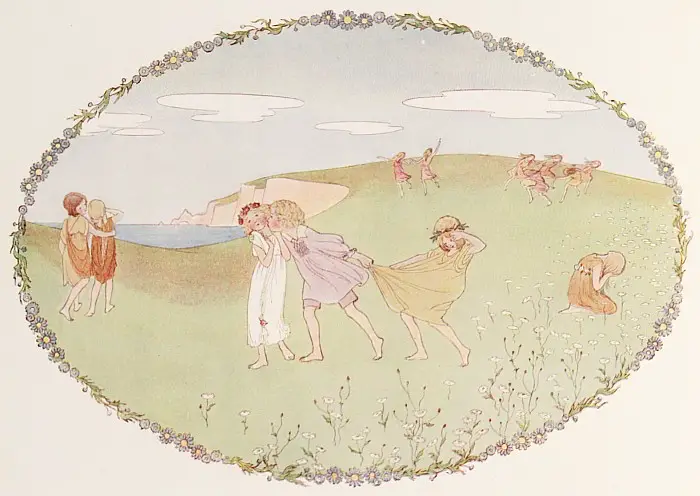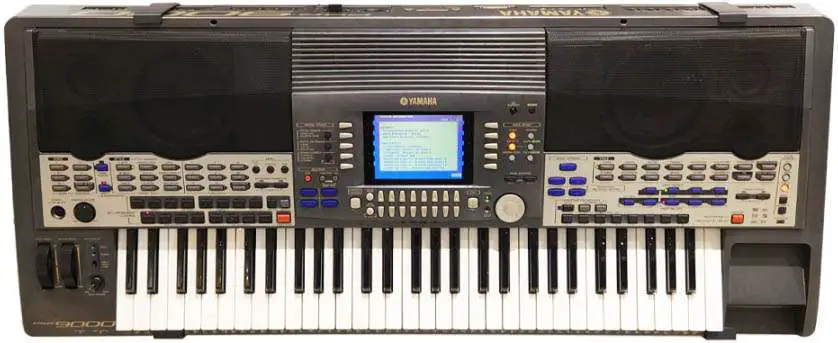The Original MODXs
In 2016, two years after Yamaha’s mammoth MONTAGE arrived on the scene, impressive in both features and price tag, came the first baby siblings in the form of the MODX arranger workstations keyboards.
Featuring many of the same impressive sound engines, controls and functions, they were a more lightweight and affordable option for those looking for some powerful sound possibilities but without access to so much cash.
Available in three models—MODX6 (61 semi-weighted keys), MODX7 (76 semi-weighted keys) and MODX8 (88 Graded Hammer Standard keys)—there’s one to suit a wide variety of musicians. There’s no aftertouch on any of the models.
All models feature the Motion Control Synthesis Engine AWM2 and 8 elements FM-X with eight operators and 88 algorithms. Polyphony is a maximum 128 for AWM2 and 64 for FM-X, with 16 distinct parts available for layering, performance and sequencing.
Controls include pitch bend and mod wheels, 4x control sliders, 4x control knobs, super knob and data dial. Each instrument has a 7″ TFT wide touch screen.
On board effects include Seamless Sound Transition technology, 18 filter types, eight simultaneous arpeggios with thousands of preset types, several gigabytes worth of preset wave data and 1GB for user data.
No internal speakers on these instruments, which keeps weight and cost down.
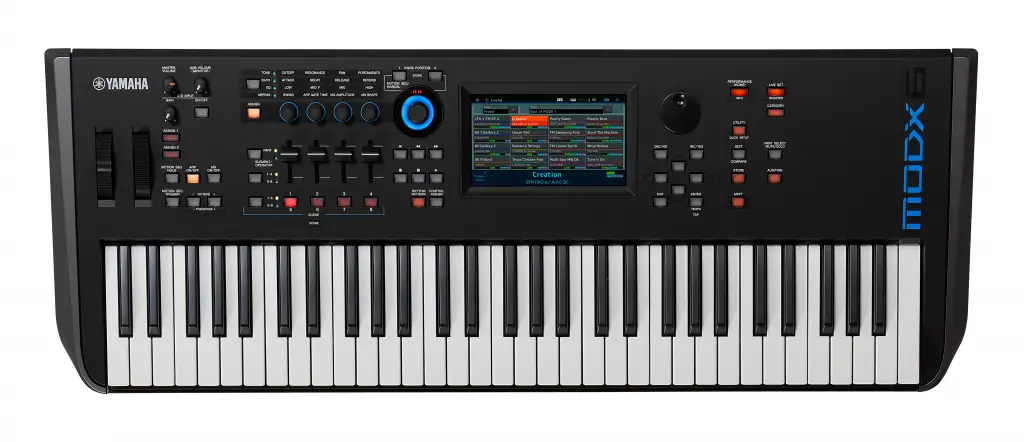
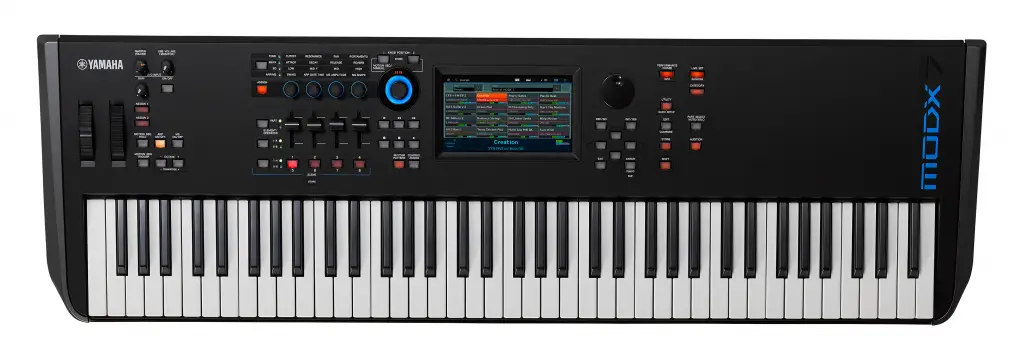
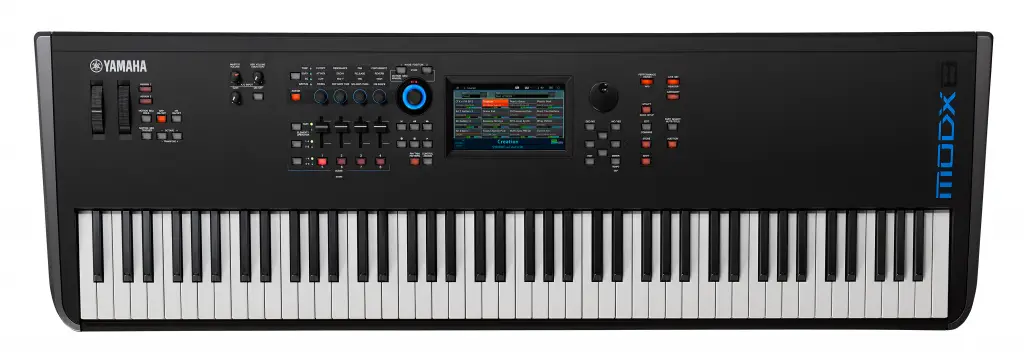
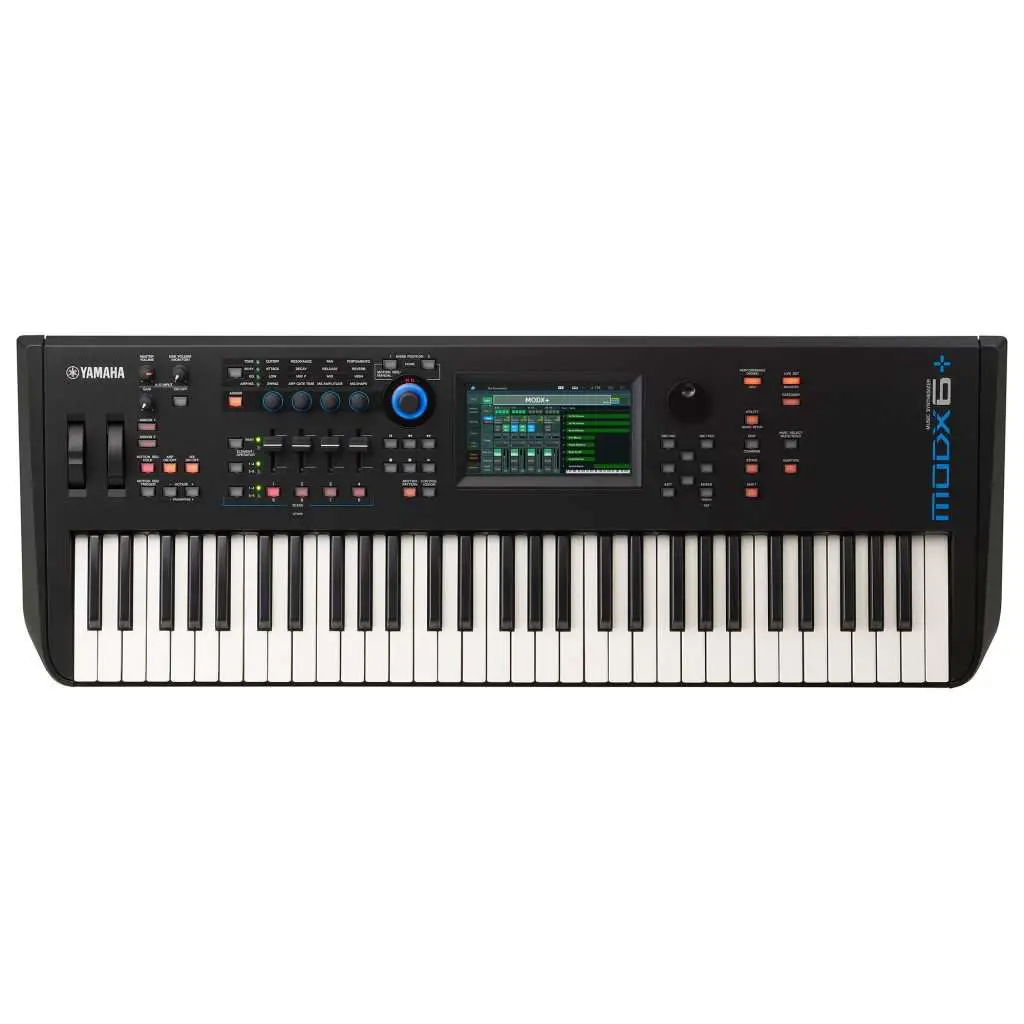

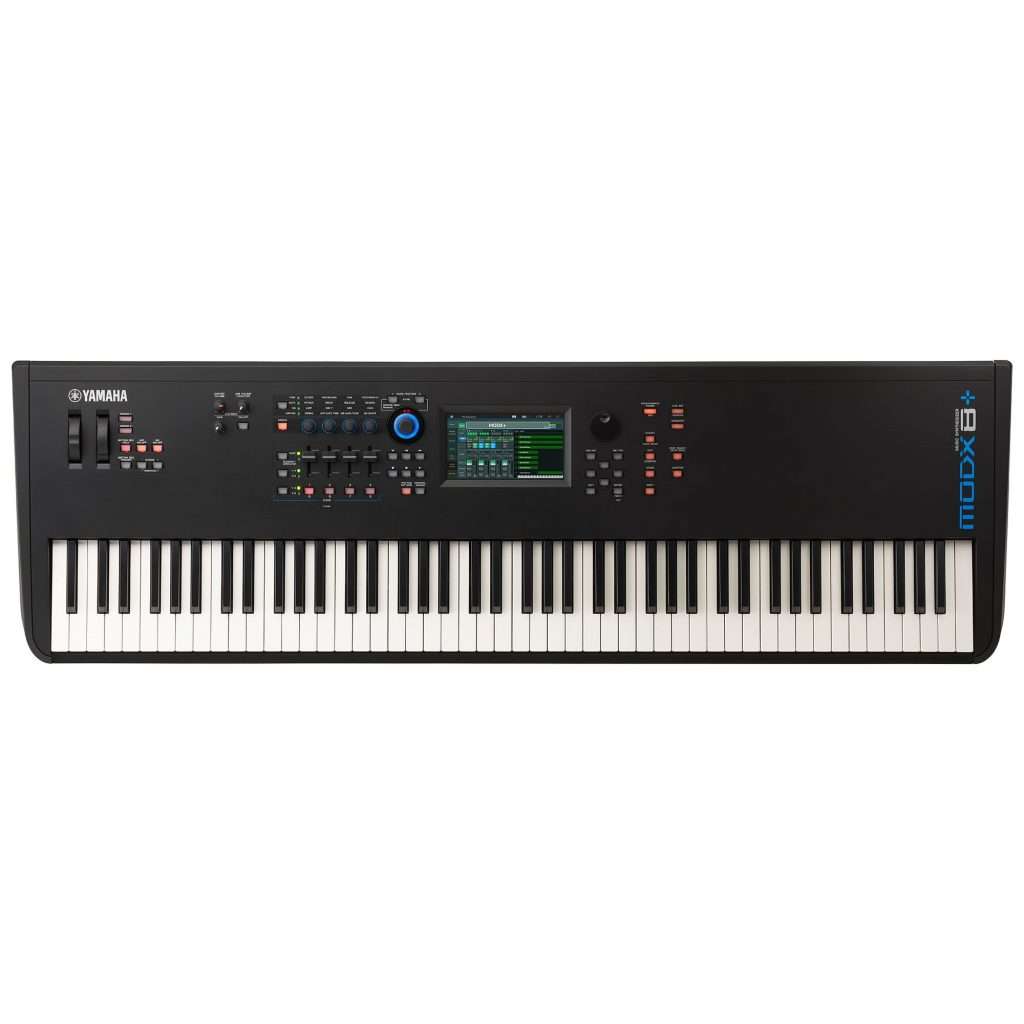
MODX+
Five years on and Yamaha launched its MODX+ range, designed to supersede the original MODX trio described above.
The potential surprise is that there are only two obvious differences between each equivalent keyboard, namely the polyphony and the amount of user data storage.
You can view this as the MODX range being so good and feature-enhanced in the first place that, five years on, there’s not much Yamaha can add. Or you could think that the company has run out of ideas and is just trying to push a new range with a slight design enhancement and better polyphony, which usually increases in more modern instruments anyway.
Either way, the two main points are the FM-X engine now gets 128 notes of polyphony instead of the 64 — AWM2 sticks at 128. And user storage memory increases from 1GB to 1.75GB.
RRP is $100 more than the original MODX versions sold for ($50 more on the MODX6+).
All other published specifications appear to be the same.
Specifications
Yamaha’s published specification table is summarised below for all six models.
|
MODX8 |
MODX8+ |
MODX7 |
MODX7+ |
MODX6 |
MODX6+ |
|
|
Width |
1,333mm (52-1/2″) |
1,144mm (45-1/16″) |
937mm (36-7/8″) |
|||
|
Height |
160mm (6-1/16″) |
134mm (5-1/4″) |
134mm (5-1/4″) |
|||
|
Depth |
404mm (15-7/8″) |
331mm (13-1/16″) |
331mm (13-1/16″) |
|||
|
Weight |
13.8 kg (30 lbs 7 oz) |
7.4 kg (16 lbs 5 oz) |
6.6 kg (14 lbs 9 oz) |
|||
|
Number of Keys |
88 |
76 |
61 |
|||
|
Key Type |
GHS Keyboard |
Semi-weighted Keyboard |
||||
|
Initial Touch |
Yes |
|||||
|
Aftertouch |
No |
|||||
|
Tone Generator |
Motion Control Synthesis Engine AMW2: 8 Elements FM-X: 8 Operators, 88 Algorithms |
|||||
|
Maximum Polyphony |
AWM2: 128 (max.; stereo/mono waveforms) FM-X: 64 (max.) |
AWM2: 128 (max.; stereo/mono waveforms) FM-X: 128 (max.) |
AWM2: 128 (max.; stereo/mono waveforms) FM-X: 64 (max.) |
AWM2: 128 (max.; stereo/mono waveforms) FM-X: 128 (max.) |
AWM2: 128 (max.; stereo/mono waveforms) FM-X: 64 (max.) |
AWM2: 128 (max.; stereo/mono waveforms) FM-X: 128 (max.) |
|
Multi Timbral Capacity |
16 Parts (internal), Audio Input Parts (A/D*, USB*) *stereo Part |
|||||
|
Wave |
Preset: 5.67 GB (when converted to 16 bit linear format), User: 1.00 GB |
Preset: 5.67 GB (when converted to 16 bit linear format), User: 1.75 GB |
Preset: 5.67 GB (when converted to 16 bit linear format), User: 1.00 GB |
Preset: 5.67 GB (when converted to 16 bit linear format), User: 1.75 GB |
Preset: 5.67 GB (when converted to 16 bit linear format), User: 1.00 GB |
Preset: 5.67 GB (when converted to 16 bit linear format), User: 1.75 GB |
|
Performance |
Approx. 2,000 |
2,227 |
Approx. 2,000 |
2,227 |
Approx. 2,000 |
2,227 |
|
Filter |
18 types |
|||||
|
Effects |
Reverb x 12 types, Variation x 76 types, Insertion (A, B) x 76 types*, Master Effect x 15 types *A/D part insertion x 71 types (Preset settings for parameters of each effect type are provided as templates) Master EQ (5 bands), 1st part EQ (3 bands), 2nd part EQ (2 bands) |
Reverb x 12 types, Variation x 88 types, Insertion (A, B) x 88 types*2, Master Effect x 26 types *2 A/D part insertion x 83 types (Preset settings for parameters of each effect type are provided as templates) Master EQ (5 bands), 1st part EQ (3 bands), 2nd part EQ (2 bands) |
Reverb x 12 types, Variation x 76 types, Insertion (A, B) x 76 types*, Master Effect x 15 types *A/D part insertion x 71 types (Preset settings for parameters of each effect type are provided as templates) Master EQ (5 bands), 1st part EQ (3 bands), 2nd part EQ (2 bands) |
Reverb x 12 types, Variation x 88 types, Insertion (A, B) x 88 types*2, Master Effect x 26 types *2 A/D part insertion x 83 types (Preset settings for parameters of each effect type are provided as templates) Master EQ (5 bands), 1st part EQ (3 bands), 2nd part EQ (2 bands) |
Reverb x 12 types, Variation x 76 types, Insertion (A, B) x 76 types*, Master Effect x 15 types *A/D part insertion x 71 types (Preset settings for parameters of each effect type are provided as templates) Master EQ (5 bands), 1st part EQ (3 bands), 2nd part EQ (2 bands) |
Reverb x 12 types, Variation x 88 types, Insertion (A, B) x 88 types*2, Master Effect x 26 types *2 A/D part insertion x 83 types (Preset settings for parameters of each effect type are provided as templates) Master EQ (5 bands), 1st part EQ (3 bands), 2nd part EQ (2 bands) |
|
Controllers |
Master Volume, AD Input Gain knob, USB Volume, Pitch Bend wheel, Modulation wheel, Control Sliders x 4, Knobs x 4, Super Knob, Data dial |
|||||
|
Display |
7″ TFT Color Wide VGA LCD touch screen |
|||||
|
Connectors |
[USB TO DEVICE], [USB TO HOST], MIDI [IN]/[OUT], FOOT CONTROLLER [1]/[2], FOOT SWITCH [ASSIGNABLE]/[SUSTAIN], OUTPUT [L/MONO]/[R] (6.3 mm, standard phone jacks), [PHONES] (6.3 mm, standard stereo phone jack), A/D INPUT [L/MONO]/[R] (6.3 mm, standard phone jacks) |
|||||
|
Power Consumption |
16 W (when using PA-150B AC adaptor) |
|||||
|
Accessories |
AC adaptor (PA-150B or an equivalent recommended by Yamaha*), Owner’s Manual (this book), Cubase AI Download Information *May not be included depending on your area. Check with your Yamaha dealer. |
|||||
|
Live Sets |
Preset: 256 and more, User: 2,048 |
|||||
|
Tracks |
16 Sequence tracks, Tempo track, Scene track |
16 Sequence tracks |
16 Sequence tracks, Tempo track, Scene track |
16 Sequence tracks |
16 Sequence tracks, Tempo track, Scene track |
16 Sequence tracks |
|
Recording type |
Real time replace, Real time overdub, Real time punch in/out |
|||||
|
Note Capacity |
Approx. 130,000 notes |
|||||
|
Note Resolution |
480 ppq (parts per quarter note) |
|||||
|
Storage Size |
? |
Approx. 520,000 notes (for Patterns) and approx. 520,000 notes (for Songs) |
? |
Approx. 520,000 notes (for Patterns) and approx. 520,000 notes (for Songs) |
? |
Approx. 520,000 notes (for Patterns) and approx. 520,000 notes (for Songs) |
|
Tempo (BPM) |
5-300 |
|||||
|
Songs |
128 songs |
|||||
|
Arpeggio |
Parts: 8 Parts simultaneous (max.), Preset: 10,239 types User: 256 types |
|||||
|
Patterns |
? |
128 patterns |
? |
128 patterns |
? |
128 patterns |
|
Sequence formats |
MODX original format, SMF formats 0, 1 |
|||||
|
Release Date |
2016 |
2021 |
2016 |
2021 |
2016 |
2021 |
|
RRP |
$2,399 |
$2,499 |
$1,899 |
$1,999 |
$1,649 |
$1,699 |


